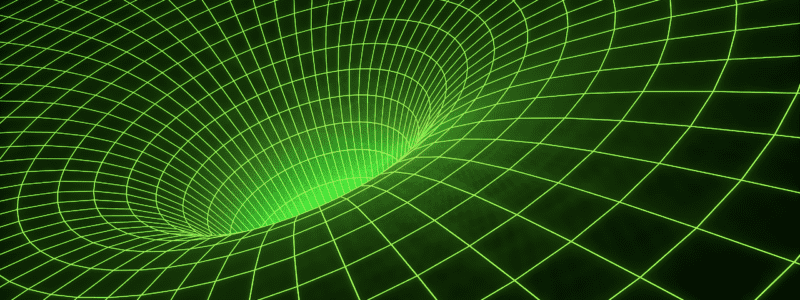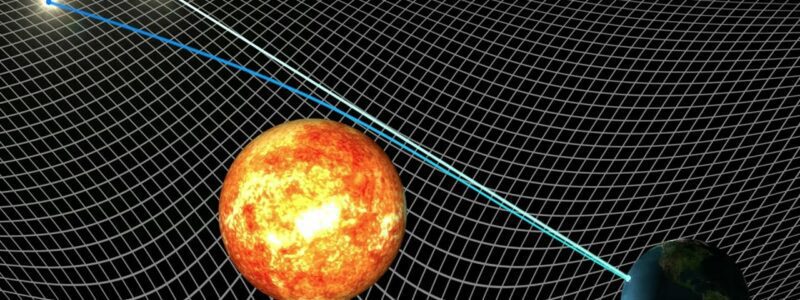Oscillating Universe
The steady-state model was a very popular model proposed during the late 1940s trying to explain the existence of the universe without the need for God. By then, it was known the universe was constantly expanding. The nasty inference from a constantly expanding universe must have had a beginning at some point in time. The steady-state hypothesis held new matter was constantly being created (using some poorly understood natural method) throughout the universe such that even though the universe is expanding, its average density remains the same.
This magically did away with the need for a beginning and more importantly, it did away with the need for a Beginner (i.e., God).
The steady state universe model along with its subsequent modifications has been shown not to be consistent with observational data. Even though there was no observational evidence for the steady-state model, it was the primary candidate for decades as a model of how the universe exists.
Another model was dusted as a possible alternative explanation for the existence of the universe consistent with observational data. Hindu teachers for centuries have proposed a concept of reincarnation; now this idea was applied to the life of a universe. More specifically, the oscillating universe offered a way out of an absolute beginning by proposing the universe might expand after a Big Bang, then contract to produce a Big Crush, then bounce back into a Big Bang, etc. The appeal is this theory might produce an apparent beginning while retaining the possibility of an infinite age through infinite time. The oscillating universe model would thereby obviate the need for a Beginning because there is no absolute beginning.
The Bouncing Universe
The bouncing universe model proposes the expansion of a universe after a big bang might be brought to a halt through gravitational attraction. In this model, gravity eventually wins out and brakes the expansion from the Big Bang to eventually produce a contracting universe.
The model then suggests that rather than collapsing into oblivion, the contracting universe somehow bounces back into a new cycle of expansion.
One of the proponents of this model was the physicist Robert Dicke. He noted that an infinite number of these expansions and contractions would,
relieve us of the necessity of understanding the origin of matter at any finite time in the past.
The proponents of the oscillating universe argued that after an infinite number of cosmic bounces there should be at least one which would produce the kind of universe in which we live.
The oscillating universe requires enough mass to produce a gravitational brake on the expanding universe we now see. There was a search for the matter needed to produce the gravitational contraction soon after the popularization of the oscillating universe. The problem was that all evidence point to there being a grossly insufficient amount of matter to provide gravitational braking. The latest measurements of the total mass in the universe establish a cosmic mass density that is only about 29% of that needed for a braking mechanism.

Image by Varun Kulkarni from Pixabay
Rebound. Insufficient mass is not the only problem faced by the oscillating universe. Even if the universe did have enough mass to provide gravitational braking and recollapse, there could not be an infinite number of bounces. Think of dropping a basketball onto the court; it will only bounce a few times before coming to rest on the court. With each bounce, the basketball loses energy producing a subsequent bounce that is not as high as the previous. Similarly, the entropy of the universe increases over time – there becomes more and more disorganization. This means that there is less and less mechanical energy available with each bounce for the next bounce.
The decrease in energy after each bounce means that the next bounce will produce greater expansion before collapsing.
The most lethal problem for the infinitely oscillating universe came when American astrophysicists Mark Sher, Alan Guth, and Sidney Bludman demonstrated that even if the universe contained sufficient mass to permit a collapse, any final collapse would produce a “thud” rather than a “bounce.” This makes a bouncing universe – impossible.
Infinite Expansion. Even more damning than the demonstration of the impossible of a “bounce” is the recent demonstration that the universe not only does not collapse but is actually expanding at an increasing rate. Apparently, the universe has a self-repulsive property now thought to be “dark energy” and will continue to expand forever at an increasing rate. Of course, this increasing expansion rate will mean there is no possibility of a collapse.
The oscillating universe with infinite oscillations seemed to be a means for doing without a beginning. As time went on, physicists found out this was not a tenable solution,
- Each oscillation would dissipate more energy which then produces a smaller “bounce,”
- The universe is actually expanding at a greater rate over time – there is no gravity braking on the universe’s expansion,
- A recent evaluation by Sher, Guth, and Bludman showed that a “bounce” would not occur even if somehow the universe were to collapse
Summary
The latter part of the twentieth century saw the rebirth of the oscillating universe model in an attempt to avoid the possibility of an absolute beginning. This model would have the universe expand until the gravitational pull of the universe would draw it all back in again resulting in a bounce – or another Big Bang. According to this model, this expansion and collapse could repeat an infinite number of times producing an infinite number of universes, some of which would be like our own. We have the fortunate circumstance to exist in a universe where life is possible.
Unfortunately for this theory, observational data has ruled-out the possibility of an infinite number of expansion – collapse – and expansion scenarios. In fact, there is no possibility for even one expansion after a collapse to occur due to thermodynamic considerations. Also, the universe does not have enough matter to stop the universe from expanding. And finally, observational data suggests the universe is expanding at an ever-accelerating rate – just the opposite of what would be expected for an oscillating universe.
The more that is discovered about our universe, the more the likelihood of a Big Bang creation event has become established as the best model for the best explanation for the universe we now see.





